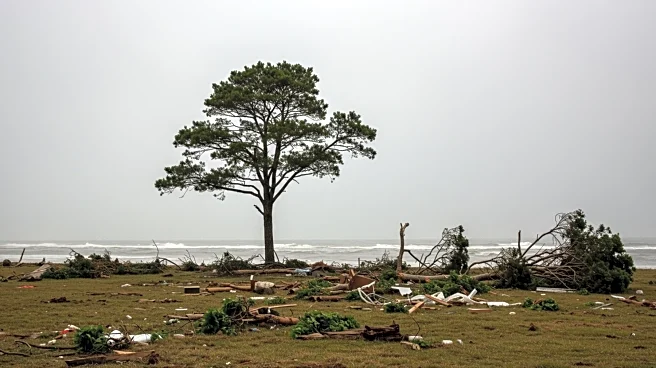What's Happening?
Thirty years after the reintroduction of grey wolves into Yellowstone National Park, their impact on the ecosystem is being evaluated. Initially, the reintroduction aimed to restore the ecosystem by controlling the elk population, which had severely affected the plant community. While the popular narrative suggests that the wolves successfully balanced the ecosystem, the reality is more complex. The changes in Yellowstone's ecosystem cannot be solely attributed to the wolves, prompting a deeper examination of their legacy and influence.
Why It's Important?
The reintroduction of wolves into Yellowstone serves as a case study for wildlife management and ecosystem restoration efforts. Understanding the true impact of wolves is crucial for informing future reintroduction projects in other regions. The narrative surrounding the wolves' success influences public perception and policy decisions related to wildlife conservation. It highlights the need for comprehensive ecological assessments to guide effective management strategies.
Beyond the Headlines
The legacy of Yellowstone wolves raises ethical and ecological questions about human intervention in natural ecosystems. It challenges the notion of simple solutions to complex environmental issues and emphasizes the importance of considering multiple factors in ecosystem management. The story of Yellowstone wolves may inspire broader discussions on biodiversity conservation and the role of predators in maintaining ecological balance.












